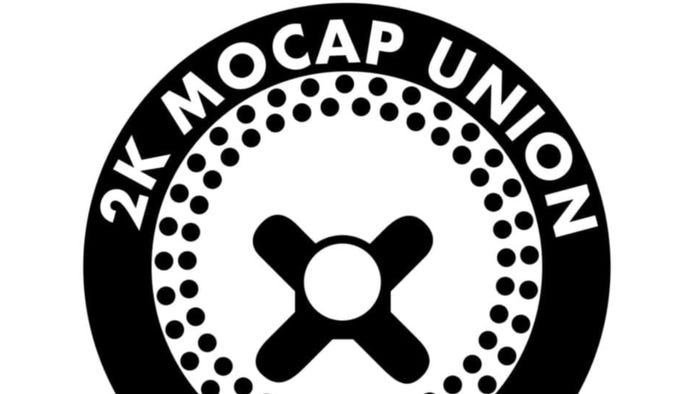U.S. retail software in 2012: What you need to know
2012 was a pivotal year for the video game industry -- so how did all of these changes effect retail software sales in the U.S.? Gamasutra analyst Matt Matthews offers this thorough breakdown to find an answer.

Last week, I covered the latest information available about video game hardware sales in the U.S. retail market. Today, I want to turn to software and highlight some important trends coming out of 2012 and into the first months of 2013.
The Bad News First
Previously, I showed how the software market has contracted in the UK, and unfortunately the U.S. has experienced a similar, but slightly less severe, contraction. Whereas the UK market lost over 26 percent in revenue in 2012 relative to 2011, the U.S. market lost 24 percent during the same period. That puts the total retail software revenue figure only $200 million ahead of the retail software market in 2006, the year that the Wii and PlayStation 3 launched. Or, to give another reference point, the retail software market has contracted 40 percent between its peak of $11 billion in 2008. The figure below gives total video game software from retail since 2005, for historical context.  In terms of units, however, the picture is slightly different. Last year, I estimate that a total of 229 million units of software were sold at retail and in 2012 that figure fell to 172 million, a decline of 22 percent. That's below even the 2005 total of 191 million units of video game software. The figure below shows total unit software sales since 2005, to give a sense of scale from the market's peak in 2008.
In terms of units, however, the picture is slightly different. Last year, I estimate that a total of 229 million units of software were sold at retail and in 2012 that figure fell to 172 million, a decline of 22 percent. That's below even the 2005 total of 191 million units of video game software. The figure below shows total unit software sales since 2005, to give a sense of scale from the market's peak in 2008.  A lot of this is simply a return to normal after the explosive popularity of the Wii, the Nintendo DS, and the music genre. However, the comparison to 2005 is troubling. In terms of revenue, the market is less than half a billion dollars larger than it was back then, and is far lower on unit sales. This suggests something a bit more serious. As I pointed out in my last column, there has always been a baseline of around 10 million consoles sold per year for at least the past decade, and in fact software revenues have grown over 20 percent on consoles compared to 2005. So the problem, frankly, isn't the console segment. The money instead is draining out of the handheld segment. By my records, retail handheld video game revenue in the U.S. was about $1.4 billion in 2005 and in 2012 the same segment of the market came in at well under a $1.0 billion, a decline of around 30 percent. In a nutshell, the final significant year of the Nintendo DS, the second year of the Nintendo 3DS, the first eleven months of the PlayStation Vita, and the death gasp of the PSP weren't enough to match the middle life of the Game Boy Advance, the first full year of the Nintendo DS, and the first 10 months of the PSP. We can try to point fingers at Nintendo or at Sony, but the fact is that both are underperforming right now.
A lot of this is simply a return to normal after the explosive popularity of the Wii, the Nintendo DS, and the music genre. However, the comparison to 2005 is troubling. In terms of revenue, the market is less than half a billion dollars larger than it was back then, and is far lower on unit sales. This suggests something a bit more serious. As I pointed out in my last column, there has always been a baseline of around 10 million consoles sold per year for at least the past decade, and in fact software revenues have grown over 20 percent on consoles compared to 2005. So the problem, frankly, isn't the console segment. The money instead is draining out of the handheld segment. By my records, retail handheld video game revenue in the U.S. was about $1.4 billion in 2005 and in 2012 the same segment of the market came in at well under a $1.0 billion, a decline of around 30 percent. In a nutshell, the final significant year of the Nintendo DS, the second year of the Nintendo 3DS, the first eleven months of the PlayStation Vita, and the death gasp of the PSP weren't enough to match the middle life of the Game Boy Advance, the first full year of the Nintendo DS, and the first 10 months of the PSP. We can try to point fingers at Nintendo or at Sony, but the fact is that both are underperforming right now.
Wii U Launches as Xbox Peaks, PS3 and Wii Decline
On the other side of the market, the year ended with four significant consoles on the market. Nintendo's Wii U launched with somewhat disappointing hardware sales, but the software was actually quite strong, with a life-to-date (LTD) tie ratio of 1.8 according to official NPD Group data. That means that each Wii U console sold so far as an average of approximately two software titles, for a total of around 1.6 million units of software. Speaking about December's sales for the Wii U, Wedbush analyst Michael Pachter told me the total was "pretty weak" but better than November's total. A tie ratio of 1.8 puts the Wii U in the same company as the PlayStation 3, which launched with a tie ratio close to 1.9 during November and December of 2006. However, it is significantly behind the original Wii whose launch tie ratio was around 2.8 in 2006 and also behind the Xbox 360, which moved nearly four units of software per system in November and December 2005. Should we also count the NintendoLand software bundled with the Deluxe Wii U model? If we do, then that significantly bumps up the actual amount of software in the hands of Wii U owners, and thus the tie ratio. However, the Wii tie ratio of 2.8 didn't include Wii Sports either, and it was packed in with every Wii back at launch. One key difference that does have to be acknowledged, however, is that the Wii U is the first console to launch with most retail games also available as downloads on day one. So some Wii U owners are undoubtedly all-digital, and aren't contributing a single unit of software to the physical retail count. Until Nintendo releases information about its software sales figures including digital, however, we're left simply speculating. Back in the last generation of consoles, the Xbox 360 and PlayStation 3 and Wii are each faring differently in terms of retail software sales. According to the figures that I have collected over the years, this is the picture I have for annual software sales throughout the generation. First, here is an update on LTD sales for each console, given in the figure below.  After being passed back in 2009 by the explosive software sales on the Wii, the Xbox 360 is now firmly back in the lead for LTD software sales. Its tie ratio now stands at 9.7, a record for the platform and up from 9.5 back in September 2012. The corresponding tie ratios for the other platforms, according to official NPD Group estimates, are 8.2 for the Wii and 8.9 for the PlayStation 3. At the comparable point in its lifetime, last December, the Xbox 360 had a tie ratio of 9.1. (If you want a launch-aligned version of the graph above, just click here.) Perhaps the really important story here is the annual software sales rates. The figure below shows my estimates for those figures, launch-aligned.
After being passed back in 2009 by the explosive software sales on the Wii, the Xbox 360 is now firmly back in the lead for LTD software sales. Its tie ratio now stands at 9.7, a record for the platform and up from 9.5 back in September 2012. The corresponding tie ratios for the other platforms, according to official NPD Group estimates, are 8.2 for the Wii and 8.9 for the PlayStation 3. At the comparable point in its lifetime, last December, the Xbox 360 had a tie ratio of 9.1. (If you want a launch-aligned version of the graph above, just click here.) Perhaps the really important story here is the annual software sales rates. The figure below shows my estimates for those figures, launch-aligned.  Just look at the way the Wii came out of the gate, doubling its software sales between its first full calendar year and its second. Then it peaked briefly in its third full calendar year (2009) and has been on a downward trajectory ever since. Moreover, for the first time all generation, I believe the PlayStation 3 outsold the Wii in a calendar year. Remember that the Wii hardware base is almost 75 percent larger than the base for the PlayStation 3, so outselling the Wii on software is a reasonably notable achievement. On the other hand, the annual rate of PlayStation 3 software sales fell slightly, and that has to be somewhat worrying for Sony. I've said in the past that Sony could soon be a one-system company again, and at least in the U.S. that appears close to coming true. What of the PlayStation Vita? I don't have official figures, but the estimates I've seen suggest that the Vita sold a mere $100 million in software at retail for the year on a base of 1.3 million systems. That's approximately two $40 games per owner, not counting any software bundled with systems. It's also an order of magnitude below what Nintendo generated in the past year on its two handhelds. Of course, the Vita also has an online store, and I'm sure there are people there who have gone all digital just as there are on the Wii U. (For the record, I'm one. I went almost completely digital back in 2009.) So it is possible that we're missing the big picture, because so much commerce is being done digitally, but it's up to Sony to reveal that kind of revenue. In a recent conversation about the PlayStation Vita and its difficulties, Wedbush analyst Michael Pachter said that the system is going to have "trouble getting third party support" going into 2013. That just strengthens my sense that the system could really be Dreamcasted this year unless something dramatic happens, and soon.
Just look at the way the Wii came out of the gate, doubling its software sales between its first full calendar year and its second. Then it peaked briefly in its third full calendar year (2009) and has been on a downward trajectory ever since. Moreover, for the first time all generation, I believe the PlayStation 3 outsold the Wii in a calendar year. Remember that the Wii hardware base is almost 75 percent larger than the base for the PlayStation 3, so outselling the Wii on software is a reasonably notable achievement. On the other hand, the annual rate of PlayStation 3 software sales fell slightly, and that has to be somewhat worrying for Sony. I've said in the past that Sony could soon be a one-system company again, and at least in the U.S. that appears close to coming true. What of the PlayStation Vita? I don't have official figures, but the estimates I've seen suggest that the Vita sold a mere $100 million in software at retail for the year on a base of 1.3 million systems. That's approximately two $40 games per owner, not counting any software bundled with systems. It's also an order of magnitude below what Nintendo generated in the past year on its two handhelds. Of course, the Vita also has an online store, and I'm sure there are people there who have gone all digital just as there are on the Wii U. (For the record, I'm one. I went almost completely digital back in 2009.) So it is possible that we're missing the big picture, because so much commerce is being done digitally, but it's up to Sony to reveal that kind of revenue. In a recent conversation about the PlayStation Vita and its difficulties, Wedbush analyst Michael Pachter said that the system is going to have "trouble getting third party support" going into 2013. That just strengthens my sense that the system could really be Dreamcasted this year unless something dramatic happens, and soon.
Nike Helps Microsoft Kinect
Speaking to a retail insider recently about a third holiday with Kinect, I was told that Microsoft's Nike + Kinect Training title had sold exceptionally well. It occurred to me that Kinect might be pulling in former Wii Fit consumers, and helping Microsoft maintain its competitive edge at retail. I spoke with Liam Callahan, an analyst for the NPD Group, and he was able to provide some interesting background about Nike + Kinect and the fitness genre overall. According to Callahan, the units of Nike+Kinect Training sold after its November 2012 launch "represent[ed] 15 percent of all Fitness genre games during Q4 2012 and 22 percent of the dollars." So that does suggest that Nike+Kinect Training was a fairly successful product, especially with big names like Zumba and Jillian Michaels already established on the market. But is the Xbox 360 gaining any share in the fitness genre? Yes, says Callahan, since "in 2012, Xbox 360 accounted for 36 percent of all Fitness software units compared to 24 percent for 2011". But, I should point out that the fitness genre is one that is contracting, just like the rest of the market. In the full year of 2011, the total number of fitness software units was 5.2 million, and that fell 46 percent to 2.8 million in 2012. So Microsoft has a greater share of a shrinking pie.
Call of Duty: Not Dead Yet
Last month, it looked like Call of Duty: Black Ops II sales were not going to compare well with the previous year's installment. However, according to comments from Michael Olson of Piper Jaffray and Company, the title came roaring back in December and ended the year down only 2 percent in terms of units. Given that we know that Modern Warfare 3 ended 2011 with around 12 million units sold, that means that Black Ops II is right in that same neighborhood, maybe just below 12 million. Prior to the release of the December figures, Olson was expecting Black Ops II to be "down low double digits". But in his notes on December's final results he commented that the title showed a 28 percent improvement over December 2011 sales for Modern Warfare 3. Moreover, revenue for Black Ops II was up slightly even on fewer units sold, an impressive accomplishment. Other titles in the top 10 also did well, compared to predecessors a year ago. According to Olson, LTD sales of Assassin's Creed III are more than 100 percent higher than sales of 2011's Assassin's Creed: Revelations while LTD sales of FIFA 13 are approximately 20 percent higher than FIFA 12 for the comparable period. Olson attributes these bright spots at the top of a troubled retail environment to the quality of the software and the experience it offers consumers. According to his analysis, "high quality console titles are positioned to take share and, in some cases, grow nicely." At long last, it's good to hear some good news, isn't it?
About the Author
You May Also Like









